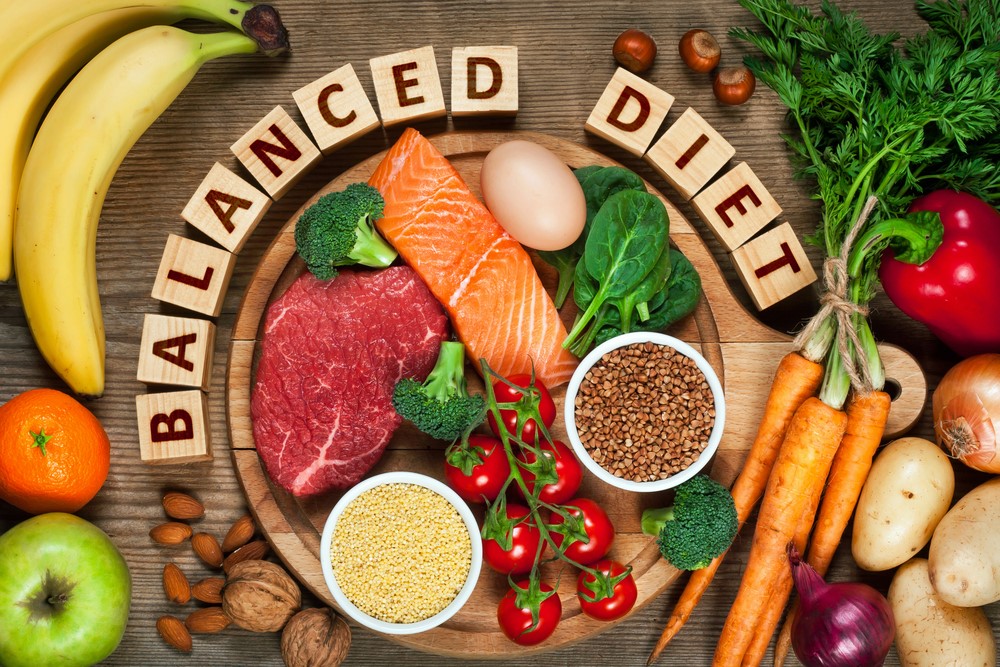Invisible yet influential, the oils lining the shelves of your kitchen hold a secret that's impacting your health more than you might imagine.
During my 30-day challenge with the carnivore diet, I became acutely aware of my dietary choices and what I was putting into my body.

One of the primary purposes of the carnivore diet is to function as an elimination diet.
Through this approach, you strip away most foods typically part of a regular North American diet, leaving only a few core ingredients.
This entails eliminating all processed foods from your diet to get a sense of how your body feels without the influence of processed ingredients.

My results with the carnivore diet were astonishing, mainly regarding reducing inflammation.
I suffer from an autoimmune disorder, and the carnivore diet served as a means to exclude foods that could trigger inflammation in my body.
Through my research, I gained valuable insights into the foods I was consuming and those potentially doing more harm than good for my body.
When it came to commonly enjoyed foods, seed oils were one of the most prevalent sources of inflammation.

Seed oils have been hidden in our food products for years.
These oils can be found in many foods, from seemingly healthy vegetable snacks to protein powders and even pre-sliced chicken breasts!
I was unknowingly consuming high-calorie, inflammatory oils in foods that I had been led to believe were good for me.

I found this revelation concerning.
This revelation left me questioning the labeling of "health foods" when they actually contained highly inflammatory oils.
This issue is crucial because most manufacturers have labelled seed oils as heart-healthy.

Unfortunately, this is not the case when you delve into the processes these oils undergo.
This article aims to shed light on my findings regarding seed oils.
My Philosophy: By becoming better informed about the foods we commonly eat and enjoy, we can make healthier choices for a longer, healthier life.
What are Seed Oils?
Seed oils are liquids extracted from the seeds of certain plants.
These oils have a variety of uses, including cooking and are incorporated into various food products we regularly eat.
Some common examples of seed oils include sunflower oil, soybean oil, and canola oil.

People use these oils for frying food, preparing salad dressings, and even certain beauty products.
Seed Oil Creation:
Picture this: 1870s Cincinnati, when soap was crafted from the pig's rendered fat.
But within this traditional backdrop, two visionary soap makers:
William Procter and James Gamble, embarked on a daring enterprise.

The pair stumbled upon an innovative soap-making method, utilizing cottonseed oil.
Cottonseed oil was once used for illumination while in most cases was deemed nothing more than "toxic waste."
Edwin Kayser, a German chemist, wrote to Procter & Gamble on October 18, 1907, about a new chemical process that could create a solid fat from a liquid.
Their ingenious move repurposed this cottonseed oil as the primary fuel ingredient for soap, replacing traditional rendered pig fat.
This revelation sent ripples of astonishment throughout the industry
Yet it marked just the beginning of their groundbreaking discoveries.

Enter the era of "hydrogenation," a chemical process that could miraculously transform this seemingly worthless oil into a compelling competitor to the beloved lard.
This transformation elevated an otherwise "toxic waste" into the backbone of the American diet when Crisco, a household name, debuted on the market during the early 1900s.

But the oil revolution didn't stop there.
It wasn't long before other vegetable oils took center stage.
In the 1930s, soybeans made their debut in the United States.
By the 1950s, soybean oil reigned as the nation's favourite vegetable oil.

Canola, corn, and safflower oils quickly followed suit, becoming household staples.
These economical and versatile oils soon became the darlings of American kitchens, a transformation orchestrated in no small part by the strategic marketing prowess of oil manufacturers.

It was a culinary and dietary revolution, a journey from the age-old to the unprecedented, all shaped by the alchemy of seed oils.
The Impact of Seed Oils on Our Health:
In dietary trends, industrial seed oils have emerged as a relatively recent addition, akin to refined sugar and excessive calorie intake, largely absent from our diets just a century ago.

Before the 1900s, humans did not include industrial seed oils in their diets.
Instead, they relied on natural fats like butter, tallow, and ghee for their dietary fat needs.
However, in the contemporary era, margarine and "heart-healthy" canola oil have become the new fad.
Promoted as lower-calorie, better for you, option to traditional butters and fats.

The shift has been striking.
Between 1970 and 2000, the average consumption of a single industrial seed oil, soybean oil, soared from a mere four pounds per person per year to a staggering 26 pounds per person per year.

This dramatic increase is well-documented in scientific research.
How Modern Seed Oils Are Made:

The intricate process of obtaining seed oils involves the extraction of oil from various plant seeds.
Below, we present a simplified yet comprehensive overview of this elaborate procedure:
Harvesting:

The journey commences with the meticulous harvesting of seeds from various plants.
These seeds may hail from sunflowers, soybeans, canola, and more.
Cleaning:

After the harvest, an extensive cleaning process ensues.
This step is vital for removing impurities such as dirt and debris, ensuring the purity of the final oil product.
Heating:

A pivotal process involves subjecting the seeds to exceptionally high temperatures.
This heat induces the oxidation of unsaturated fatty acids within the seeds, creating byproducts that can be detrimental to human and animal health.
Crushing or Grinding and Pressing:

The seeds are expertly crushed or ground into a paste following the cleaning.
This action serves to break down the cellular structures of the seeds, thus facilitating the release of the oil.
Solvent Extraction:

On certain occasions, mainly when dealing with seeds of lower oil content, a solvent extraction method may be employed.
Solvents like hexane prove indispensable in dissolving the oil from the seed paste.
Post-extraction, the solvent undergoes evaporation, leaving behind the precious oil.
Why the Utilization of Solvents in Seed Oil Processing?

Solvent extraction garners a bigger yield when opposed to pressing or expeller processes risk which risk overheating the oils.
Thereby retaining a significant amount of high-value oil within the seeds.
This pursuit of optimal yield prompts using chemical solvents for this purpose.
These chemicals are infused into the oils and are then carried withtin them.
Refining/Bleaching:

In commercial production, the extracted oil often undergoes supplementary processes to elevate its quality and extend its shelf life.
These processes encompass refining, degumming, and deodorizing, all of which target the removal of impurities.
Deodorization, in particular, assumes a critical role, as the innate odours of certain seed oils can be rather unpalatable.
However, it is imperative to acknowledge that this step can yield trans fats, widely recognized for their adverse impact on human health.
Packaging:

The final, meticulously crafted oil is packaged into bottles or containers, primed for distribution and immediate use.
A Concerning Process: Unlike other sources of fats, there's an extensive list of added unnatural ingredients, toxins, and chemicals employed to extract these products and transform them into oil. It's alarming to see how intensely artificial and manufactured these oils have become.
Why Cooking with Seed Oils also Spells Trouble:
If industrial seed oils weren't already detrimental enough to our health, restaurants and home chefs often partake in a practice that exacerbates their adverse effects:
The repeated heating of industrial seed oils.

This common habit, particularly prevalent in the restaurant industry where deep-fryers are utilized extensively and comes at a considerable health cost.
The Consequence?
The recurrent heating of industrial seed oils initiates a domino effect of health hazards.
It depletes the presence of vitamin E, a natural antioxidant essential for our well-being.
Simultaneously, this process triggers the formation of free radicals—a notorious troublemaker that induces oxidative stress.

These malevolent free radicals wreak havoc by damaging DNA, proteins, and lipids throughout the body.
This nefarious cycle of events is the root cause of the association between repeatedly heated industrial seed oils and many health woes,
These include: High blood pressure, heart disease and intestinal/liver damage and more heath concerns.
Healthy Cooking Fats to Consider
Now that you have a baseline understanding of these seed oils and the negative effects seed oils have on our heath.
How can we transform our cooking practices to prioritize healthy and natural ingredients that promote our overall well-being?
Try these natural sources of fatty acids that provide the nourishment your body craves.
Extra Virgin Olive Oil

Olive oil boasts a history spanning thousands of years in human diets.
It's a treasure trove of health benefits, featuring antioxidant vitamin E and polyphenols.
These compounds offer many advantages, from heart health to diabetes prevention.
Coconut Oil

Thanks to a wealth of health-enhancing properties, coconut oil deserves its superfood status.
Packed with medium-chain triglycerides like lauric acid, it's a quick energy source with potent antifungal, antibacterial, and antiviral effects.
With 90 percent saturated fat, coconut oil is highly stable at high temperatures, making it ideal for cooking.
Butter and Ghee

Butter and ghee from grass-fed animals contain conjugated linoleic acid, a fatty acid renowned for its anti-cancer and metabolic health benefits.
While butter may contain trace amounts of milk proteins, ghee typically remains safe for those sensitive to dairy, as it undergoes a process that removes all milk constituents during its creation.
Key Points to Remember:
Always check the label.

If you spot seed oils among the top six ingredients, chances are the food is highly processed.
While avoiding seed oils is tough, try your best to limit their consumption or opt for healthier ingredients like the ones I mentioned.
What is Safe to Consume?

A helpful rule of thumb is:
If is spoils, chances are it's better for you than something that can last the zombie apocalypse.

Butter, ghee, and even olive oil will eventually spoil as opposed to the longer the shelf life of other seed oils and like foods made with them.
Strive to choose foods with minimal ingredients that you can readily identify.

I've shifted my diet toward whole foods from one source, such as meat, fruits, and even cheeses.
The fewer ingredients something has, the easier it is for your body to digest and the healthier it is overall.
Remember, this isn't meant to discourage you from enjoying your favourite treats like Oreos.

But it's something to consider the next time you're at the store and unsure about the healthiness of a product.
Try your best to make sure that even your "health" foods aren't concealing a hidden secret to ensure that your food is genuinely beneficial for your body.

For Glory!




